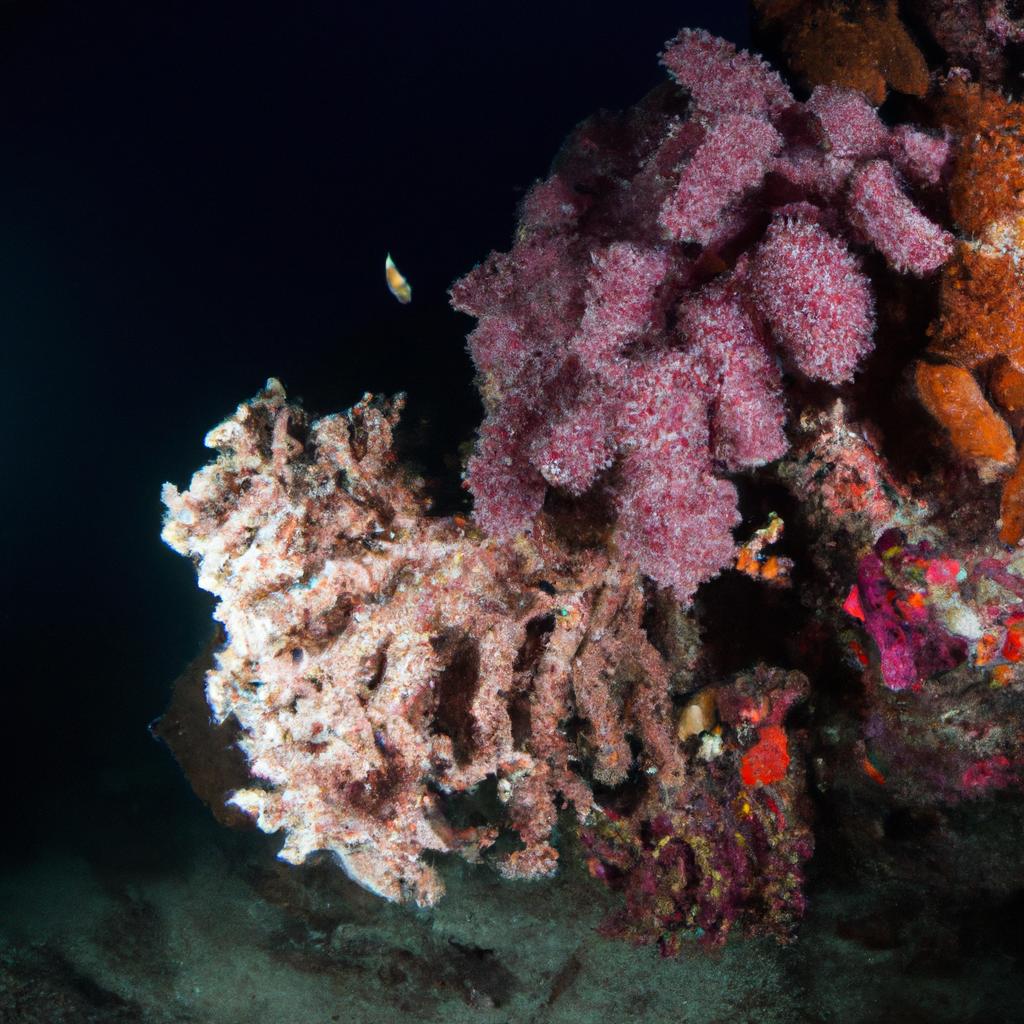Coral reefs are a vital part of the ocean ecosystem, providing homes for countless marine species. Not only do these vibrant underwater structures support marine life, but they also sustain the livelihoods of millions of people worldwide. While coral reefs are fascinating during the day, their true beauty comes alive at night. In this article, we’ll delve into the captivating world of corals at night and why they are a must-see.
The darkness of the nighttime unveils a different side of coral reefs, revealing a vibrant world that is often concealed during daylight hours. Corals exhibit unique behavior at night, with some species extending their tentacles to capture prey while others partake in spawning activities. Understanding the nocturnal behavior of corals is crucial for conservation efforts, as it allows researchers to better comprehend the needs of different species and develop effective protection strategies.
Exploring corals at night is an unforgettable experience. The colors and patterns of corals are more vivid in the dark, creating a mesmerizing visual display that leaves a lasting impression. Night diving enables divers to witness the intricate beauty of corals up close, highlighting the delicate details of these magnificent structures. Whether you’re a seasoned diver or a beginner, exploring corals at night is an adventure that should not be missed.
Unveiling the Nighttime Behavior of Corals
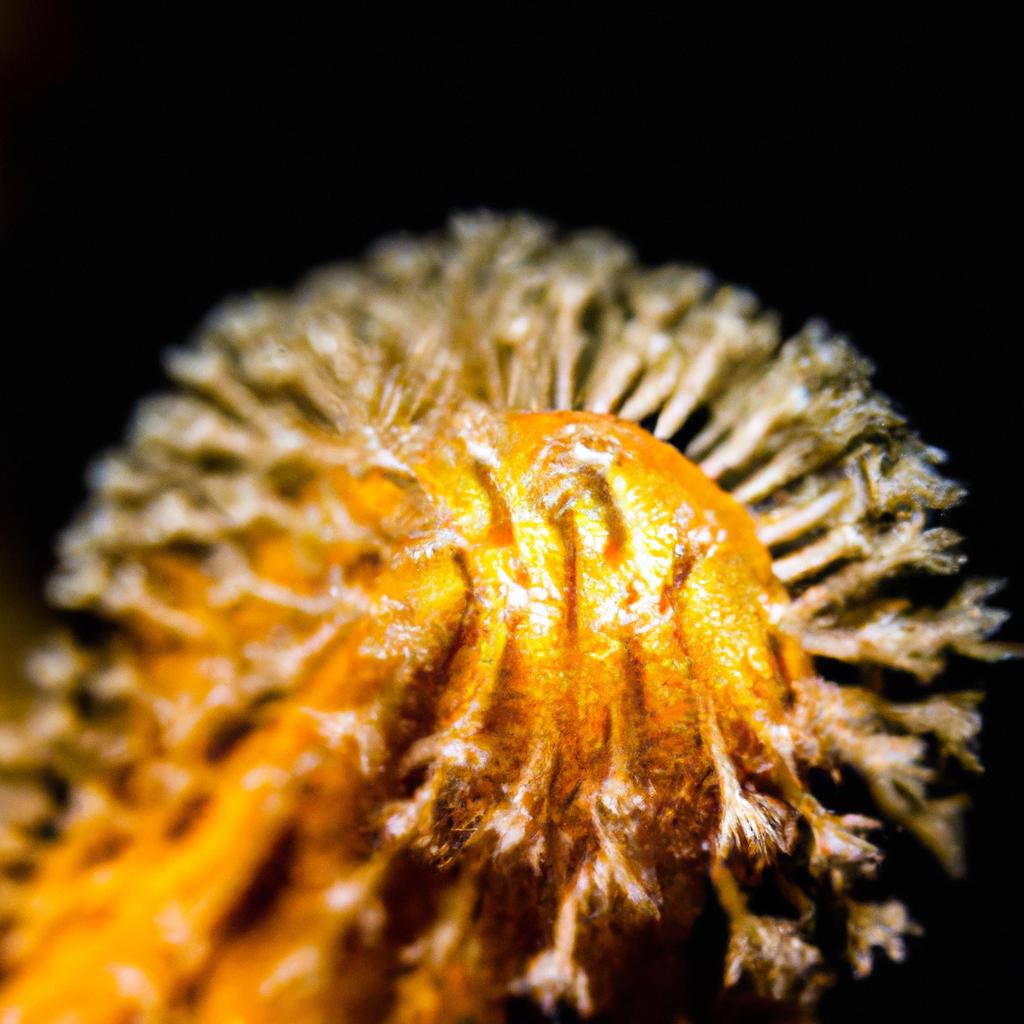
Corals are complex organisms that exhibit a variety of behaviors at night. The darkness of the ocean floor allows them to engage in activities that remain hidden during the day. Understanding the behavior of corals at night is crucial for conservation efforts, as it helps researchers gain insights into the needs of different species and develop effective protection strategies.
How Corals Behave at Night
At night, corals extend their tentacles to capture prey and engage in spawning activities. Some species release eggs and sperm into the water, forming zygotes that develop into new coral polyps. Other species use bioluminescence to attract prey or deter predators.
Overview of Different Types of Corals and Their Behaviors
There are two main types of corals: hard and soft. Hard corals, also known as reef-building corals, shape the structure of coral reefs. They exhibit various behaviors at night, such as extending their tentacles to capture prey and engaging in spawning activities. Soft corals, on the other hand, lack a hard skeleton and are less visible at night. They release eggs and sperm into the water and use bioluminescence to attract prey.
The Importance of Understanding Coral Behavior for Conservation Efforts
Understanding the behavior of corals at night is vital for conservation efforts. Coral reefs face numerous threats, including climate change, pollution, and overfishing. By comprehending the needs of different coral species, researchers can develop effective protection strategies to preserve these invaluable ecosystems. In the following section, we’ll explore the significance of nighttime corals for marine ecosystems.
Nighttime Corals: Guardians of Marine Ecosystems
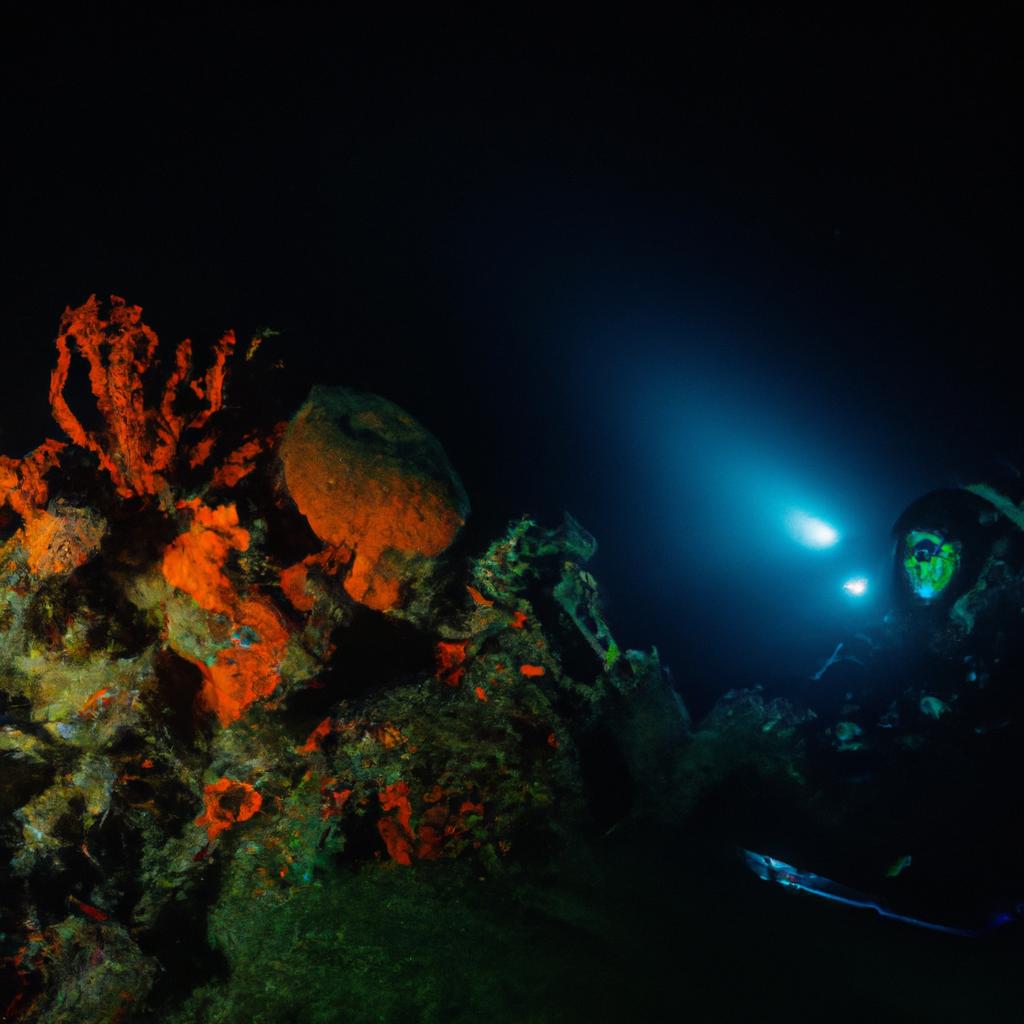
Corals not only mesmerize with their beauty but also play a vital role in the ocean ecosystem. They offer a habitat for countless marine species, including fish, crabs, and other invertebrates. Additionally, corals contribute to the overall health of the ocean by filtering water and protecting coastlines from storms and erosion.
Studying corals at night is essential for a deeper understanding of marine ecosystems. Many coral species exhibit different behaviors at night, such as spawning and feeding, which are critical for the survival of other marine organisms. By understanding the role of corals in the ecosystem, researchers can develop effective conservation strategies to maintain the delicate balance of the ocean.
Apart from providing homes for other marine life, corals themselves rely on other organisms for their survival. Coral polyps, the tiny organisms that construct coral reefs, depend on a symbiotic relationship with algae for their energy needs. Algae produce energy through photosynthesis, which coral polyps utilize to build their calcium carbonate skeletons. Without this relationship, coral reefs would cease to exist, placing the entire ecosystem at risk.
In the following section, we’ll explore the breathtaking beauty of nighttime corals and the species that radiate vibrant colors under the cover of darkness.
Unveiling the Splendor of Nighttime Corals
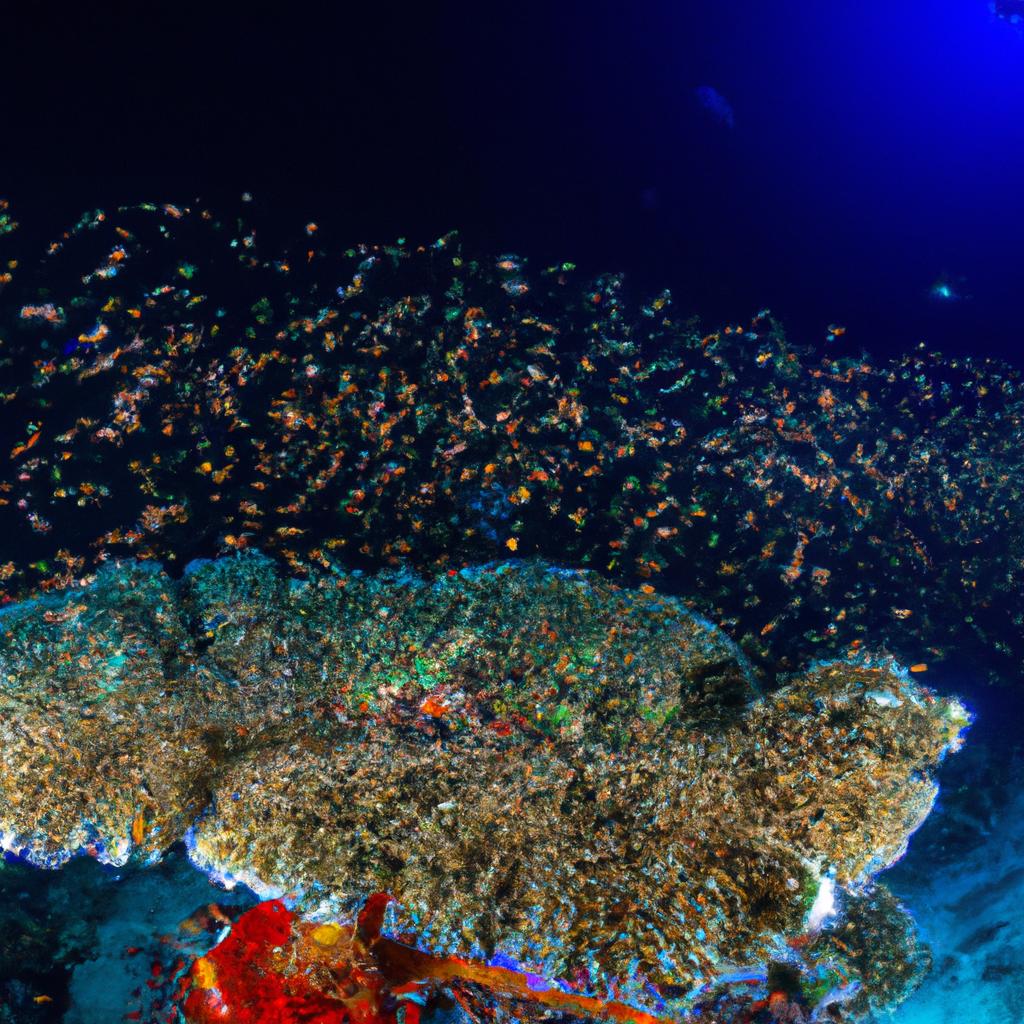
Corals at night captivate with their vibrant colors and intricate patterns that come alive in the darkness. The absence of sunlight allows the fluorescent pigments in the corals to illuminate, creating a breathtaking display of colors unseen during the day. Some coral species change their colors at night, intensifying their hues or even transforming entirely.
Nighttime is also when the most vibrant coral species emerge. Brain corals, for instance, showcase a radiant green coloration at night, while fire corals glow in fluorescent red, impossible to miss. Other species like the mushroom coral exhibit intricate patterns visible only in the dark.
To truly appreciate the beauty of corals at night, night diving is the perfect choice. With the aid of a light source, divers can explore the intricate details of corals up close, revealing unique patterns and colors often unnoticed during the day. Night diving also provides a more intimate encounter with the marine life surrounding the corals, as nocturnal creatures like octopuses and lobsters venture out to play.
In the following section, we’ll discuss the threats that nighttime corals are up against and why conservation efforts are vital to safeguard these delicate structures.
Protecting the Fragile Beauty of Nighttime Corals
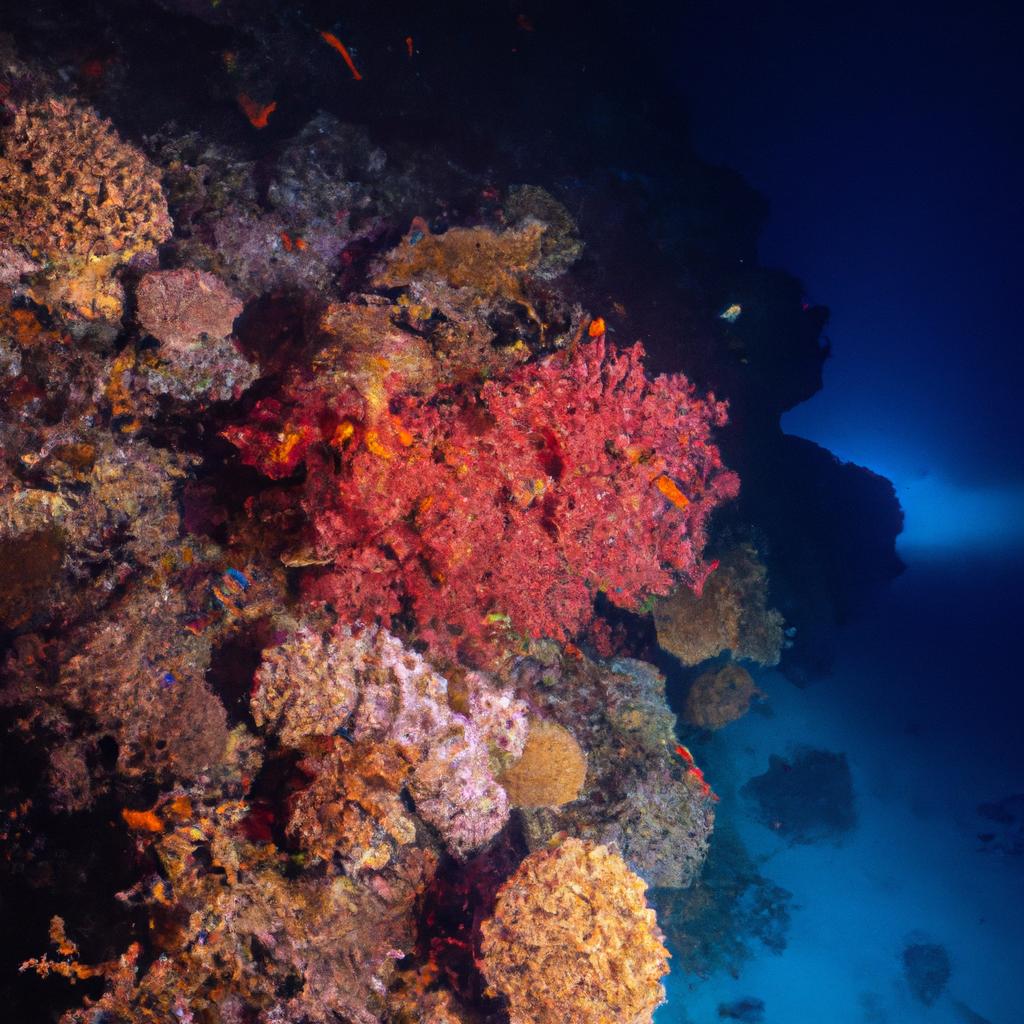
Coral reefs, including their nighttime inhabitants, face a multitude of threats that jeopardize their survival. One of the most significant threats is climate change, which has led to rising ocean temperatures and subsequent coral bleaching. Coral bleaching occurs when corals lose their vibrant colors and turn white, making them more susceptible to disease and death. Overfishing, pollution, destructive fishing practices, and coastal development also pose significant threats to coral reefs.
The impact of these threats on corals at night is severe. Coral bleaching, in particular, devastates corals, leading to their demise and diminishing the diversity of marine life in the vicinity. Overfishing and destructive fishing practices further harm corals by damaging reefs and destroying the habitats of marine species that depend on them.
Conservation efforts are crucial to protect corals at night and preserve the vitality of coral reefs. It is essential to raise awareness and support initiatives that reduce carbon emissions and combat climate change to prevent coral bleaching and mitigate the impacts of rising ocean temperatures. Moreover, efforts should focus on curbing overfishing, destructive fishing practices, pollution, and coastal development to safeguard these invaluable ecosystems.
Protecting corals at night is paramount for the health of the ocean ecosystem and the millions of people who rely on it. By implementing effective conservation strategies and reducing the impact of human activities on coral reefs, we can ensure the survival of these fascinating and indispensable underwater structures.
In conclusion, exploring the enchanting beauty of corals at night is an experience that should not be missed. Corals are integral to the ocean ecosystem, providing homes for countless marine species. Understanding the behaviors of corals at night is crucial for conservation efforts and enables researchers to develop effective protection strategies.
Nighttime corals not only safeguard marine life but also contribute to the well-being of millions of people worldwide. Given the numerous threats faced by coral reefs, it is crucial to take action to protect them. By spreading awareness and supporting conservation efforts, we can preserve these delicate structures for future generations.
At TooLacks, we are committed to promoting the splendor of nature and encouraging conservation. We hope this article has inspired you to delve into the world of corals at night and take part in efforts to protect our oceans.
For more information about TooLacks, click here.
